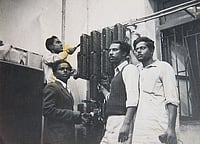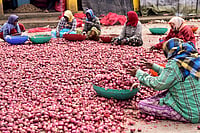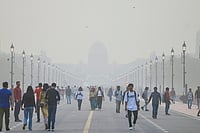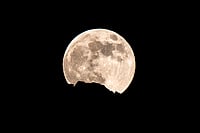This book is all about the celebrations, legends, rituals, festivities and practices of the chariot festival of Lord Jagannatha in Puri. A coffee-table book, it is embellished with many colourful photographs on various facets of the celebrations, with suitable illustrations. Readers interested in the temple, its age-old rituals and ceremonies will feel enlightened and rewarded.
The Pilgrims’ Progress
Lord Jagannatha’s Ratha Yatra is one of the great ritual showpieces in Hinduism. This meticulous study lists all, but leaves out the fascinating history.
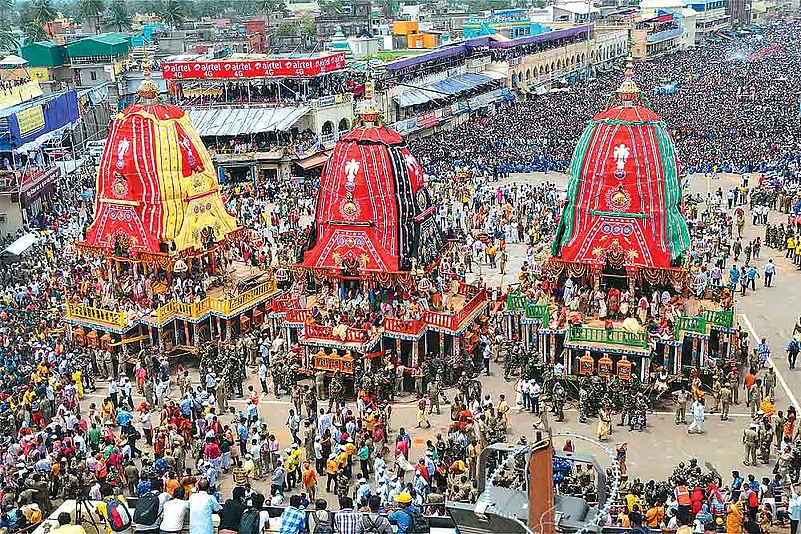
A seasoned civil servant, Subas Pani dwelt on all aspects of the Ratha Yatra of Jaga-nnatha Temple at Puri. Indeed, he has live broadcasted the Ratha Yatra over Doordarshan for two decades. Besides, his dissertation for his PhD was on medieval poet Jayadeva’s Sanskrit classic Geetagovinda and Jagannatha. The deity, add---ressed as Lord of the Universe, dominated the social, religious and cultural life and aspirations of the people of Orissa for ages. Cel-ebrations of the yatra in particular and other festivals showcase the culture and creativity of Orissa. The deity is believed to be omniscient, omnipresent and omnipotent. His Naba Kalebara, celebrated over four months once every 19 years, marks the rebirth of the presiding deities of the temple—Lord Jaga-nnatha, the supreme divinity, identified as Sri Krishna in black, Lord Bala-bhadra, as Balaram in white and Goddess Subhadra, their beloved sister in yellow. The deities undertake and perform their annual journey in newly built chariots: the rath of Balabhadra, called Taladhvaja, is made of 731 pieces of wood; Jaga-nn-atha’s rath Nandighosa has 742 pieces and Subhadra’s, Devadalana, has 711. Making of the chariots begin in February, four months before the Ratha Yatra. The timber for the construction of chariots is sel-ected by a team of master carpenters, procured from forests of Dasapalla in Odisha’s Nayagada district. Everything related to the yatra is preceded by elaborate rituals, presided over by priests. The book lists all the rituals in great detail.
On the day of the chariot festival, tens of thousands of people throng the thoroughfare called Bada Danda. In a frenzy, the crowd tries to touch the rope used for pulling the chariots and smear the dust on which they roll. The author leads you in a devotional odyssey through the maze of ancient legends, rituals, practices, ceremonies and celebrations. He is intimately familiar with the shrine, as well as the minutest detail of the rath yatra. But his sentimental involvement has militated against his scholarship, and comes in the way of a more incisive account of the temple. Historical, social and political features of the Jagannath temple find no place in the book.
When the East India Company overran Orissa in 1803, the priests of the Puri shrine voluntarily handed over its management and control to it. The British imposed tax on pilgrims by law and low caste sections were discriminated and denied entry into the shrine. According to one official account: “During the 21 years ending 1831, pilgrim tax yielded a balance of £1,39,000 or £6,619 per annum after deducting £5,955 from the gross returns for the temple expenses and charges. Pilgrim tax formed an important item of our revenue from Orissa.” Edward Washburn Hopkins (1857-1932), an American Sanskrit scholar and professor of Sanskrit in Yale University noted that “The Jagannath temple is dedicated to Buddha. But the name, temple, and idol-car are now all Vishnu’s!” Orissa fell to the diplomacy of Governor-General Lord Wellesley. A month ahead of the campaign for Orissa began, he addressed a letter to the officer commanding the Company’s army on August 3, 1803, mandating: “You shall assure the Brahmans at the pagoda of Jagannath that they will not be required to pay any other revenue or tribute to the British government than that which they have been paying to the Mahratta government, and they shall be protected in the exercise of their religious duties.” He further ordered that, “On your arrival at Jagannath, you will employ every possible precaution to preserve the respect due to the pagoda, and to the religious prejudices of the Brahman and pilgrims”. No surprise then that the conspiring priests of the temple threw themselves at the feet of the victorious British. Rabindranath Tagore captures the ambience of the chariot festival in a poem, with his characteristic sarcasm for rituals. Here is a rough translation:
To celebrate the festival of Ratha Yatra/ Devotees kneel to the ground in obeisance. The Rath believes ‘I’m the God’/The road thinks it is the deity/The idol thinks of itself? as divinity. But the almighty smiles enigmatically.
Alas, this book eschews all sarcasm and irony. It is just a relentless recounting of every little ritual, without a question asked, a doubt expressed.


















